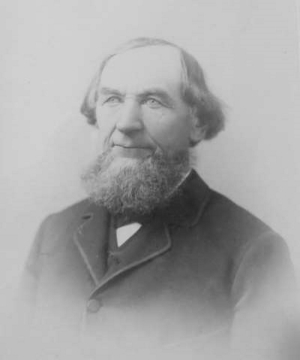George Thoman

George Thoman was born on November 13, 1819 in the village of Colmar which was near Ingersheim, Alsace, France. George had a brother Matthew (Matthias) who had come to America and settled in Riverside, Iowa sometime prior to 1854. In 1854 George Thoman, his wife and four sons came to America settling in Riverside where his brother and wife lived. The family moved west from Riverside, Iowa to Missouri in 1856, and settled on a farm near what is today the southeast comer of 55th and Prospect in Kansas City. Prospect was at this time, also known as the Harrisonville road. It was a heavy traffic road. It was also outside and somewhat isolated from the “nearby cities” of Westport and Kansas City.
Border troubles being what they were in the middle 1850s it was decided for the sake of family safety it would be best to move “into town,” the nearest being Westport. There the family took up residence with family friends, the Charles B. Garrett family. The Garrett home was located on the northwest comer of what was High street and present-day Broadway. Broadway was not called that then, it was simply a dirt road running north to south in and out of Westport. High street is today 40th street in Westport.
Howard N. Monnett in his book Action Before Westport states that it was George Thoman who “came up to [Maj. Gen. Samuel R.] Curtis and offered to show him a defile that led to the plain just south of the heights of 55th and Ward Parkway,” the defile being a narrow gulch cut out by Swan Creek that flowed from the southwest down the hill into Brush Creek. “Soldiers had stolen his grey mare along with some hams and tableware the night before,” Monnett says. The mare was about to foal. “Concerned for the mare the farmer had gone to look for her that Sunday morning (October 23, 1864) and had wandered into the Union lines.” Thomas led General Curtis and his escort with the 9th Wisconsin Cavalry up the gulch to a position west and south of the Bent farm home at 55th and Ward Parkway.
Ironically his final resting place is about 150 feet east of that where General Joseph O. Shelby is buried in Forest Hill Cemetery-the man he helped defeat that day in Westport.